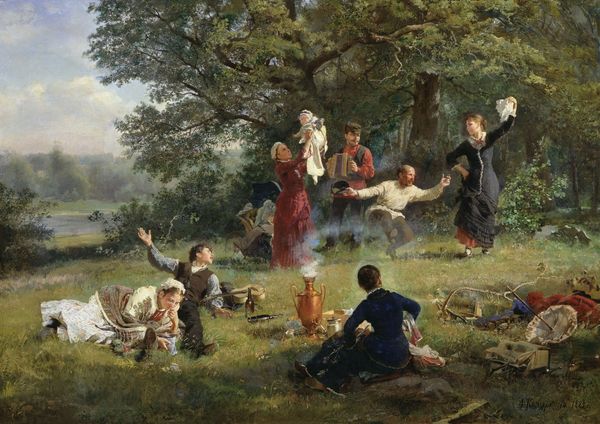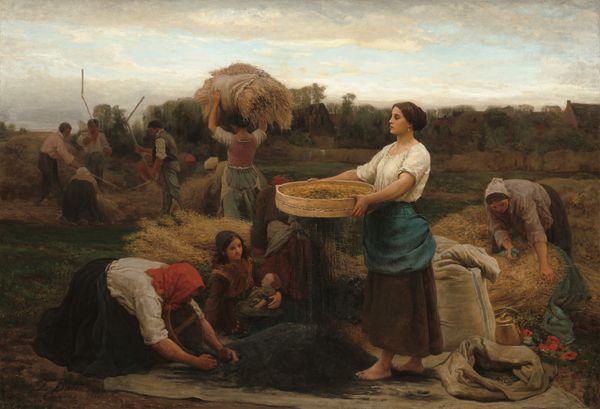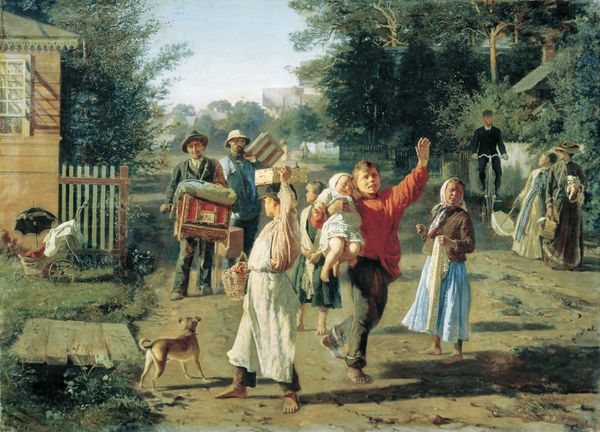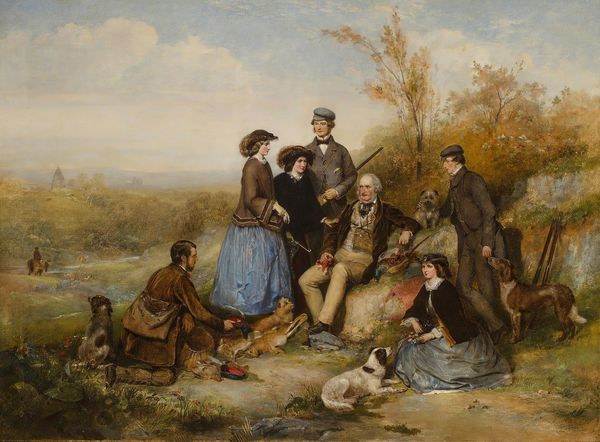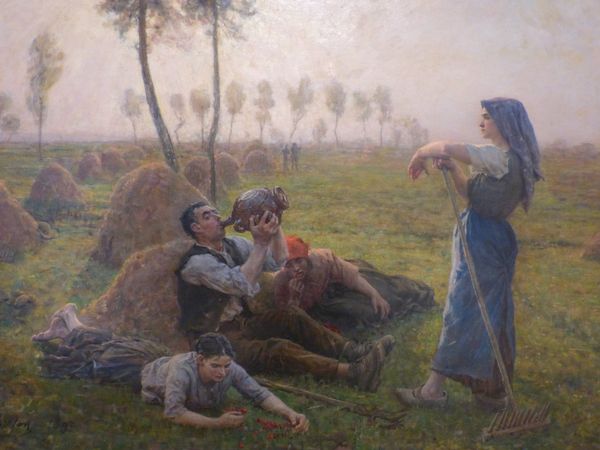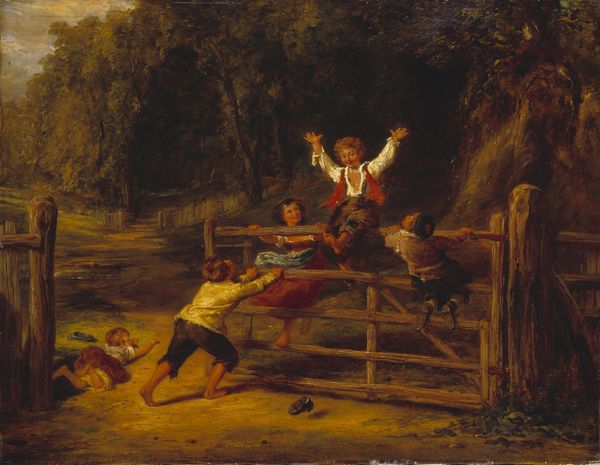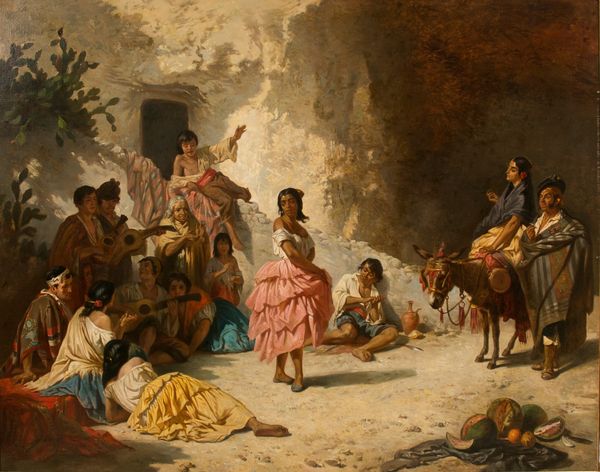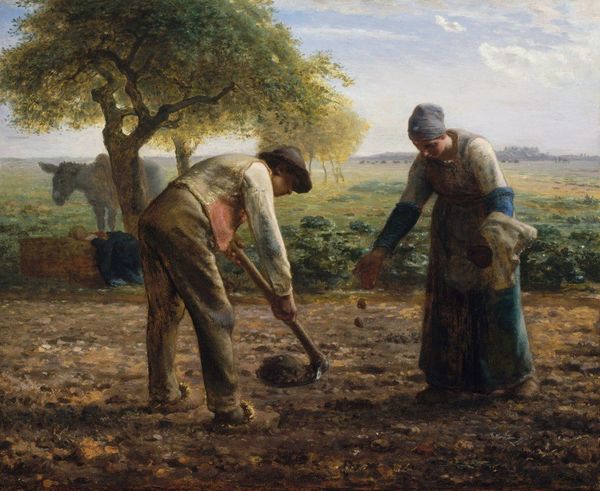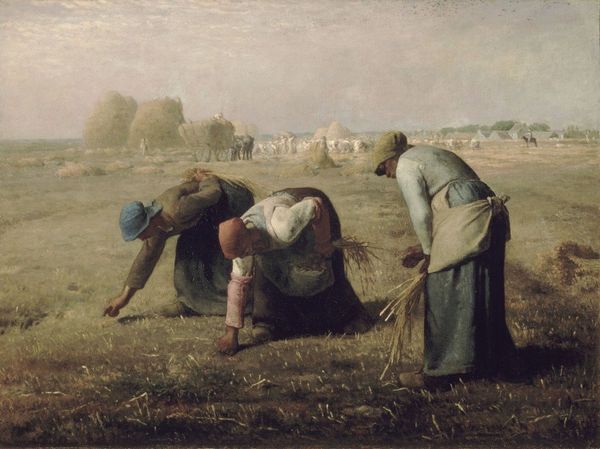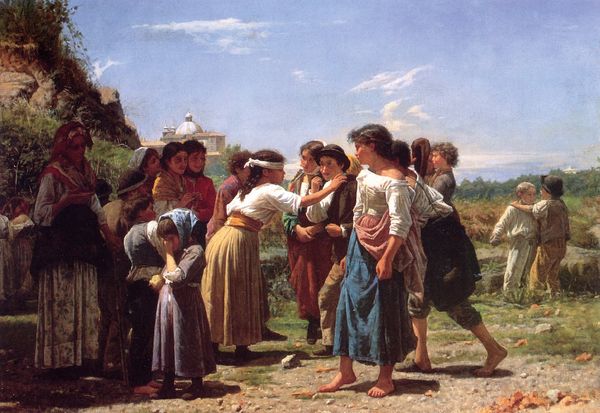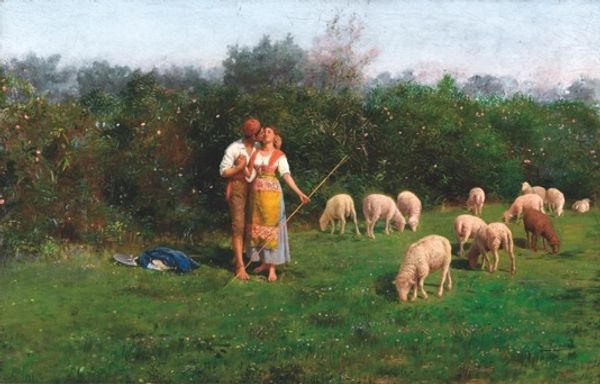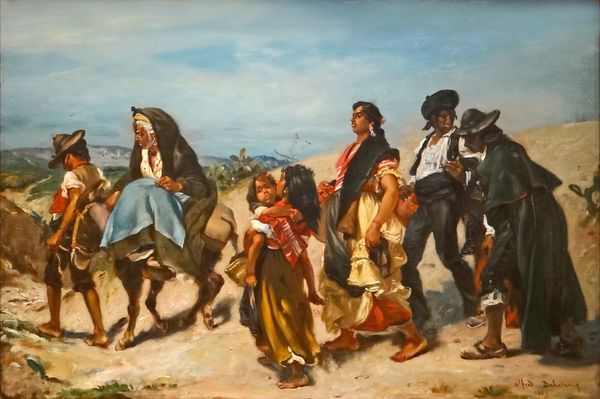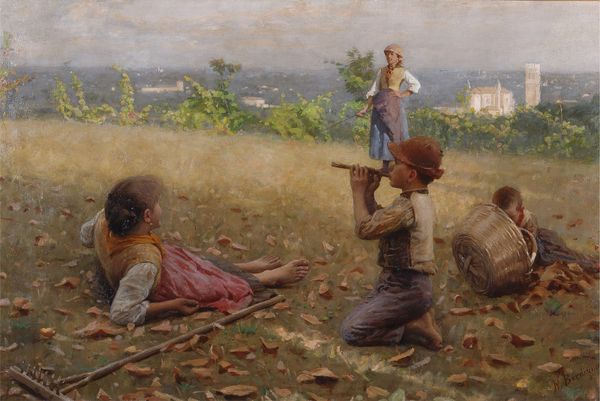
Mrs. Schuyler Burning Her Wheat Fields on the Approach of the British 1852
0:00
0:00
Copyright: Public domain
Curator: Let's consider Emanuel Leutze's 1852 oil on canvas, "Mrs. Schuyler Burning Her Wheat Fields on the Approach of the British." Editor: The scene is certainly dramatic; the warm colors contrast with the implied violence of the act, giving a strange emotional tension. Curator: It’s fascinating to interpret Mrs. Schuyler's action not as destructive but as a strategic act of resistance. It raises questions about wartime sacrifices and gendered expectations during conflict. Editor: The materiality of the fire is interesting – rendered so vividly with impasto brushstrokes, like labor physically enacted. But look also at how that burning affects others around, especially enslaved persons: a complicated story indeed. Curator: Precisely! Leutze's historical painting must be examined in context, looking at representations of enslaved persons, gender, and patriotic duty within the visual vocabulary of nineteenth-century America. It demands unpacking multiple intersectional perspectives on war. Editor: Yes, and considering the practicalities here – who harvests, who builds, and who burns? It shows Mrs. Schuyler's economic privilege. What is destroyed can perhaps be rebuilt, yes, but labor here might just go unpaid and unacknowledged. Curator: It becomes evident when thinking of these questions. This canvas represents a single moment. The complex dynamics of power are shown, and it challenges any simple idea about heroism or patriotism. Editor: Absolutely. Focusing on how even seemingly patriotic gestures impact materials and labor makes it clearer that stories around the American Revolution deserve continual investigation.
Comments
No comments
Be the first to comment and join the conversation on the ultimate creative platform.
